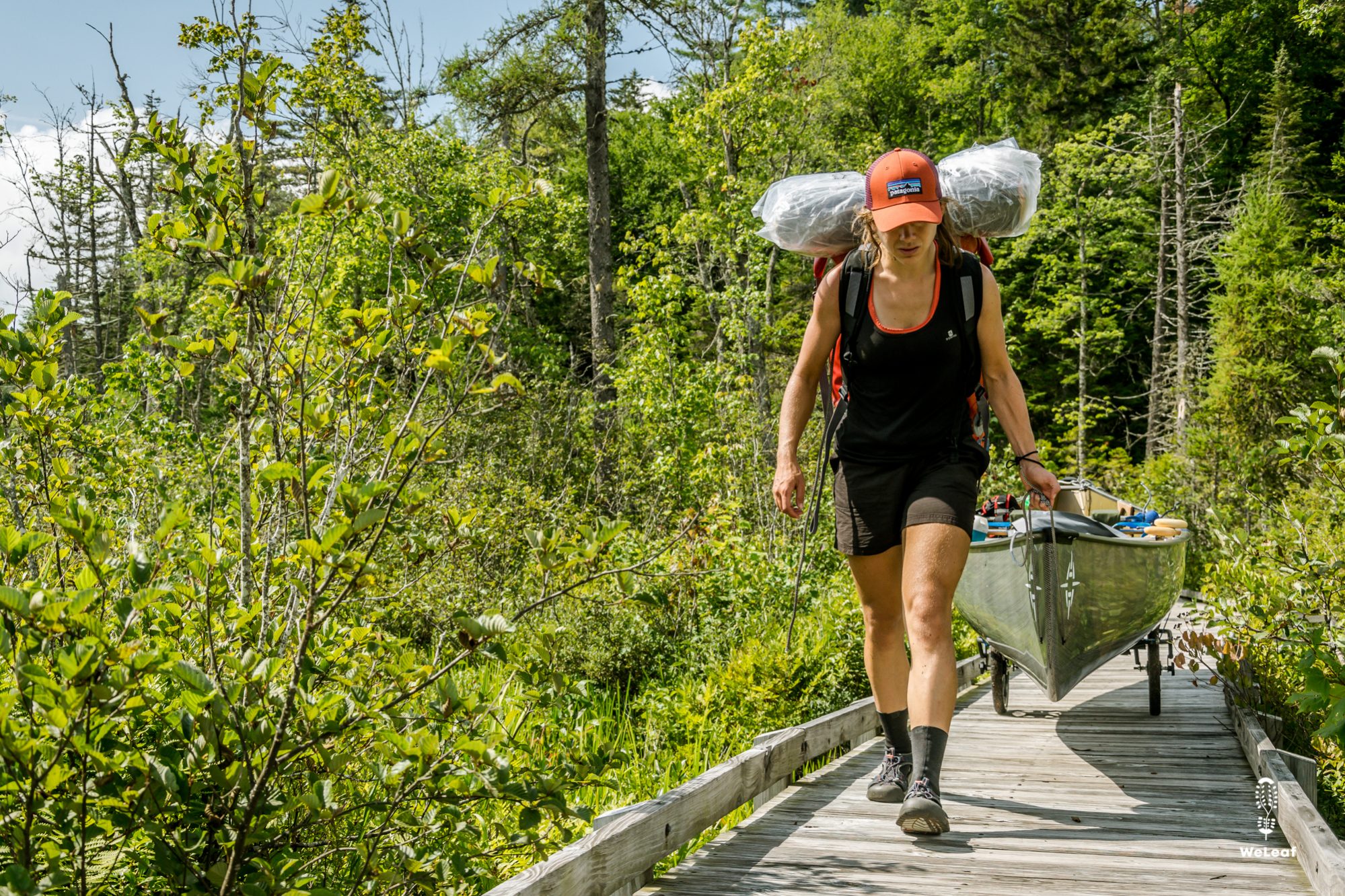
One hundred kilos on our back

The zero dollar campground
October 22, 2019
6 reasons to start the NFCT in August
October 27, 2019
Saturday August 17th - Old Forge
On Saturday morning, August 17, we are at the dock at Mountainman Outdoor. Our canoe is half in the water, half on the sand. In the middle of the canoe are two red waterproof bags, one filled with all clothes and sleeping gear, the other with food and cooking equipment. Next to the rear red bag is a grey bag with all camera gear, maps and everything that we want to reach quickly during the day. Next to the front red bag are the wheels that we will use on portages where we have to go from one water body to another. Not on all portages will be able to use the wheels, so occasionally have to carry the canoe on our heads and the wheels will be heavy extra luggage. The canoe has two seats and we will alternate who sits in the back. We also have three paddles, in case one breaks or gets lost. We have a sponge to get water out of the boat and a small watertight bag for the person in front with some energy bars, the binoculars, toilet paper and a wind jacket. There is room for many more things in the canoe, but thinking about the kilometers of portages we want to travel as light as possible. So this will be it for the next fifty days.
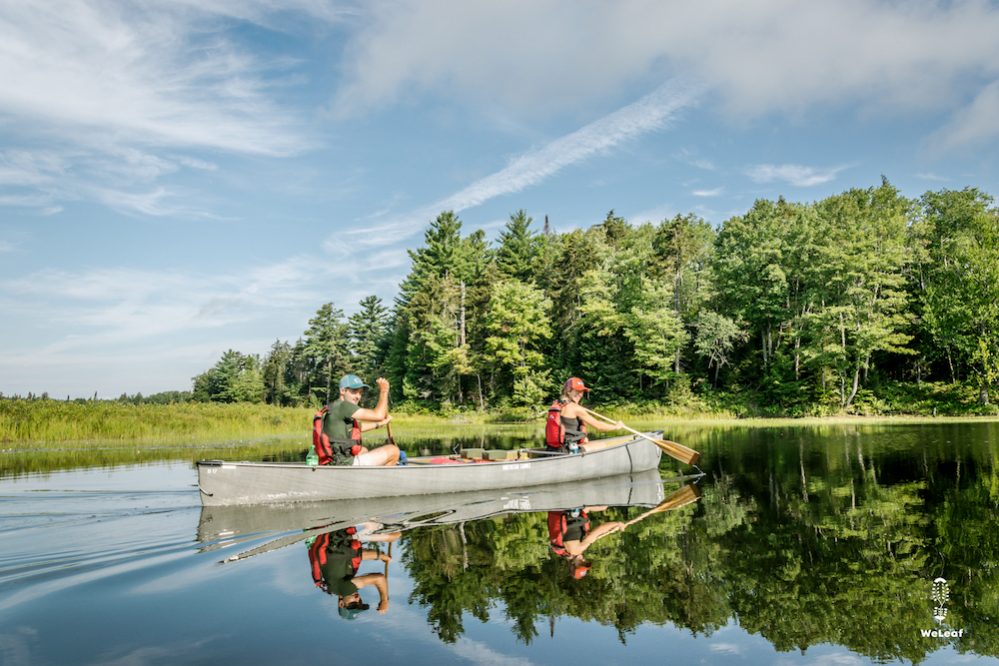
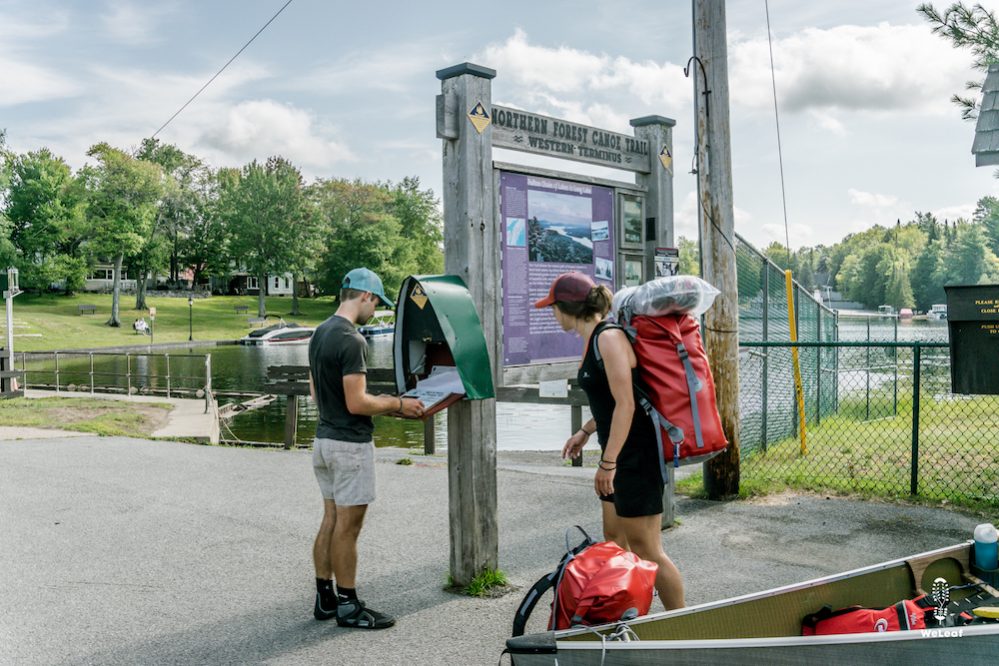
The Northern Forest Canoe Trail is a 1,200 kilometer long canoe trip that explores ancient native American waterways. It is the longest mapped canoe route in the US. The trail only exists since 2006 and since then only 100 people have completed the trail. We follow the Northern Forest, the largest connected ecosystem in the east of the United States. The trail covers 59 lakes, 23 rivers and there are more than 65 portages. There are more obstacles. At least 250 kilometers of the trip is upstream, there are big lakes and different classes of rapids. Along the way we pass beautiful landscapes and the iconic Mount Katahdin, the mythical end of the Appalachian Trail. If we endure that, we will reach the northeastern tip of the US, Fort Kent. When we make it to the end, we write history. Olivier will be the first Belgian ever to complete the trail, Zoë the third Dutch.
We have our red MTI life jackets on, water shoes and a new cap against the sun. Zoë has a bordeaux red cap with the letters Patagonia, Olivier’s one is blue with a bison. Monique’s father in law comes with a plastic bag. He has a gift for us, a brown t-shirt from Old Forge with a large anvil on it, referring to the name of the village. We leave the t-shirts with the bicycles, weight saving, which we leave in Old Forge. When we are ready with the canoe trip in almost two months, John, the owner of Mountainman, will pick up our canoe and brings our bicycles to us. Today John and Monique, where we stayed last week, paddle with us. John has had an outdoor store selling and renting canoes for 27 years, but he has never paddled the canoe on the lakes around Old Forge. He prefers to paddle on a river because then he can float calmly downstream. We convince him to paddle with us the first day, at least until the first restaurant.
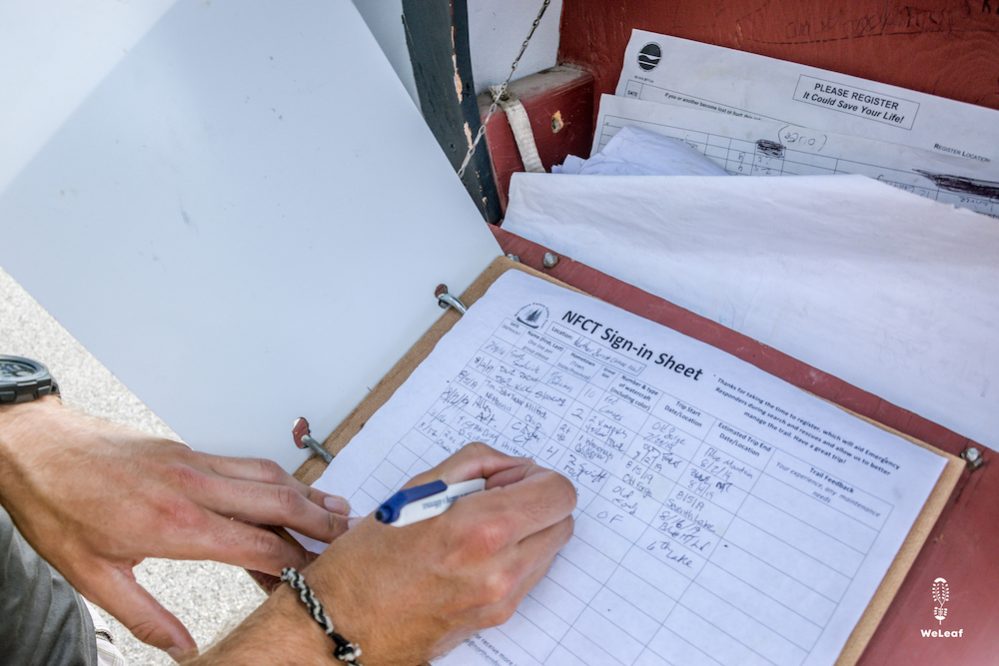
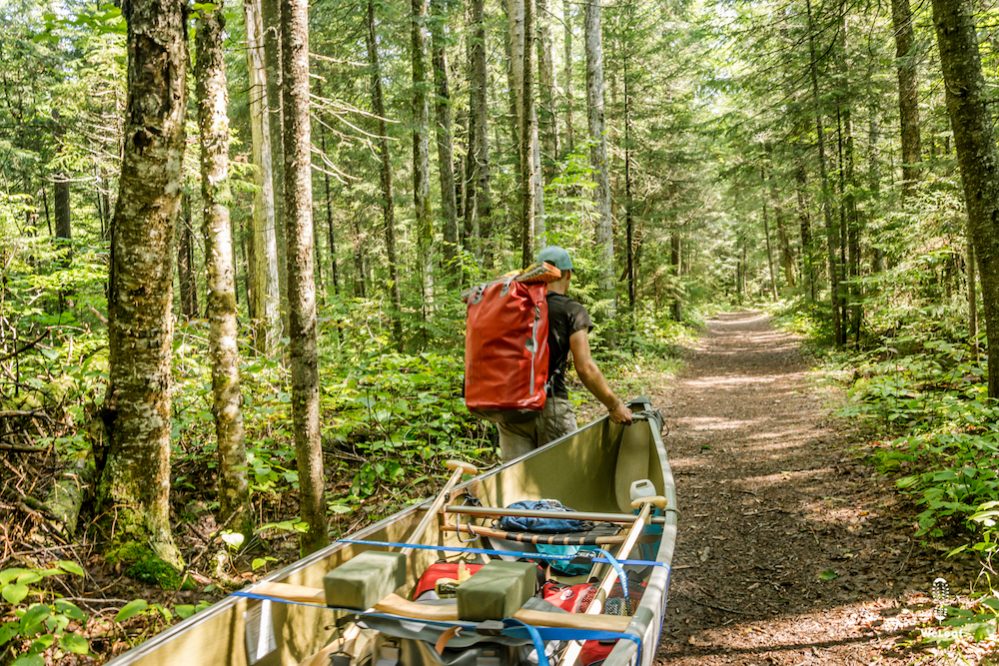
The first mile from the Mountainman store to First Lake is officially not part of the trail, but it is a great start and advertisement for John who helped us so much. We say goodbye to John, Monique and Justin's parents and will meet them one mile further at the official start where John will be waiting with his canoe. There we write our name for the first time in the NFCT logbook, which is located in different places along the trail in a small kiosk. The small box is full of loose papers so it is difficult to count how many other people started this year. We count at least twenty, but we know that between 30 and 50 start every year. Almost everyone starts in May or June when the water levels are higher. Late starters like us are rare, but we will experience for ourselves whether we really started in the wrong season. We write our names, the type of canoe and our expected arrival date, somewhere in the beginning of October. Today the sun shines in the sky, there is little wind and not a single mosquito. A good beginning, is half the work, they say?
John is indeed paddling with us until the first restaurant, about twenty kilometers away. There he treats us on pizza and we say goodbye for the last time. They return to Old Forge, we have the destination Fort Kent, 1,180 kilometers away. We cross Fifth Lake where our first portage follows, one where we can test the wheels immediately. We put the canoe on the wheels, throw all the bags in the canoe and roll smoothly on the paved roadside. A small van stops in front of us and a tall man with a cap and a light brown t-shirt gets out. It is John who has a last surprise for us. He buys a pack of firewood along the road, so that we can make a campfire tonight. At least five kilograms extra, bye bye light-weight gear. We put the canoe in Sixth Lake and paddle across a mirror into the evening sun, looking for a place for our first night. We pitch the tent on a small island and use two blocks of John's wood for a campfire.
"I can do this for fifty days," says Olivier with a satisfied smile. Zoë gives Olivier a big hug and enjoys the new adventure from head to toe.
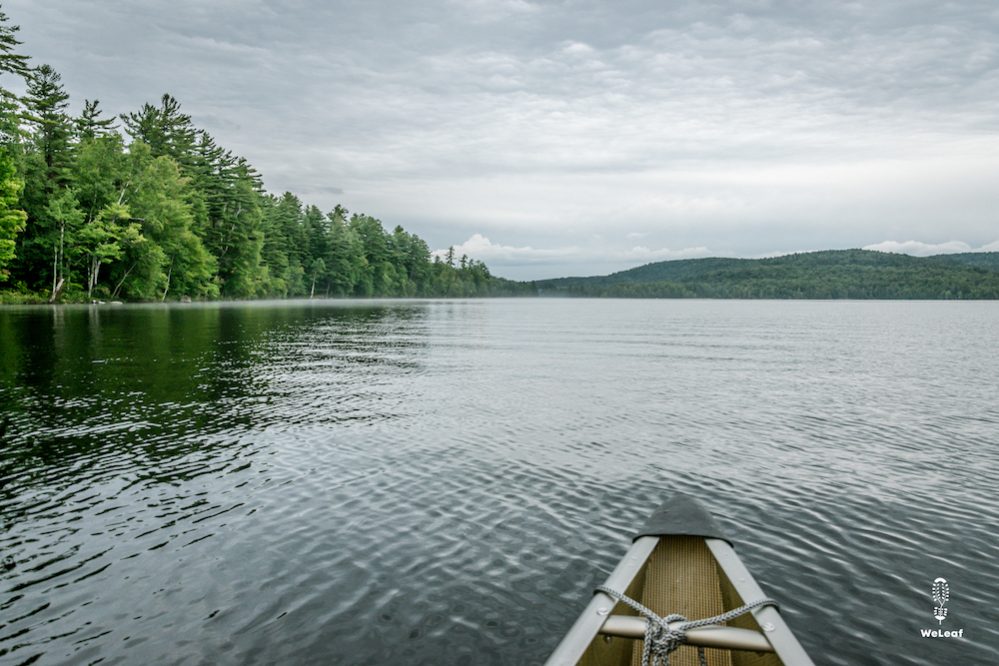
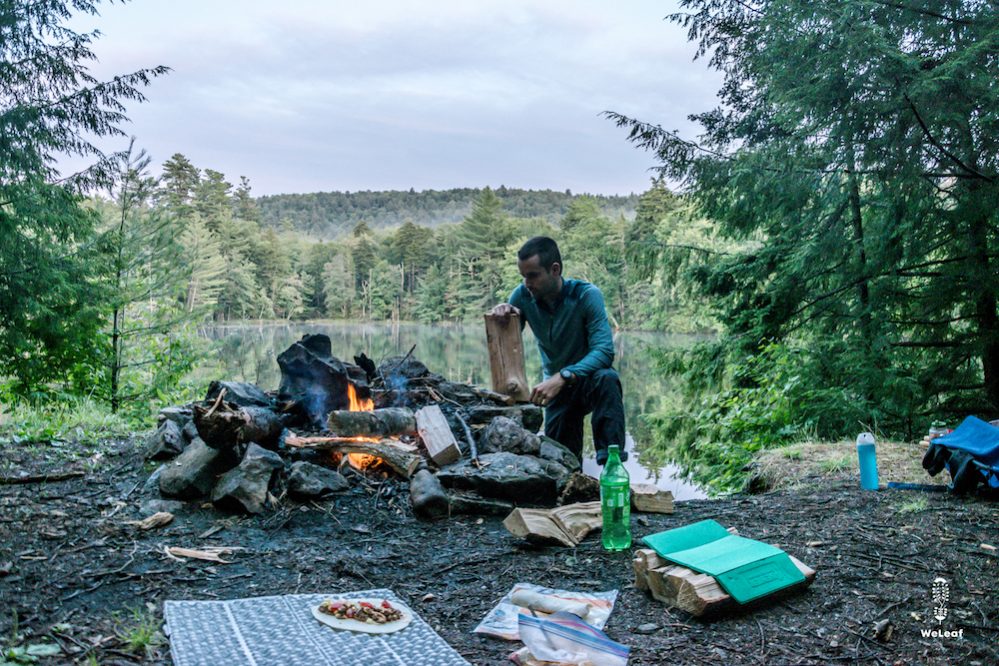
Just in time Zoë tumbles by, with her teeth clamped on each other and her hair tangled
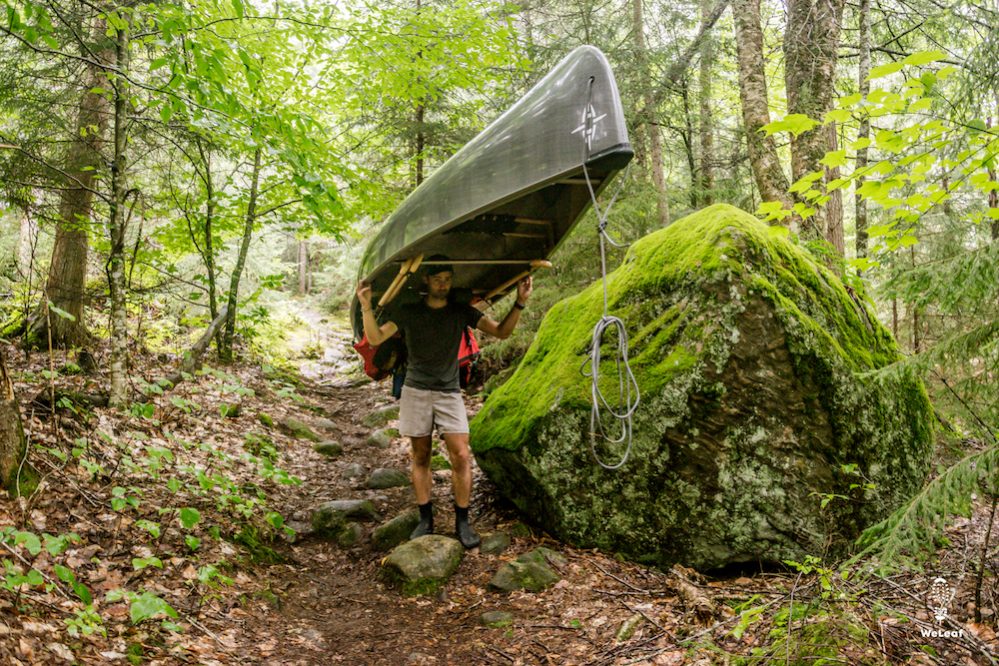
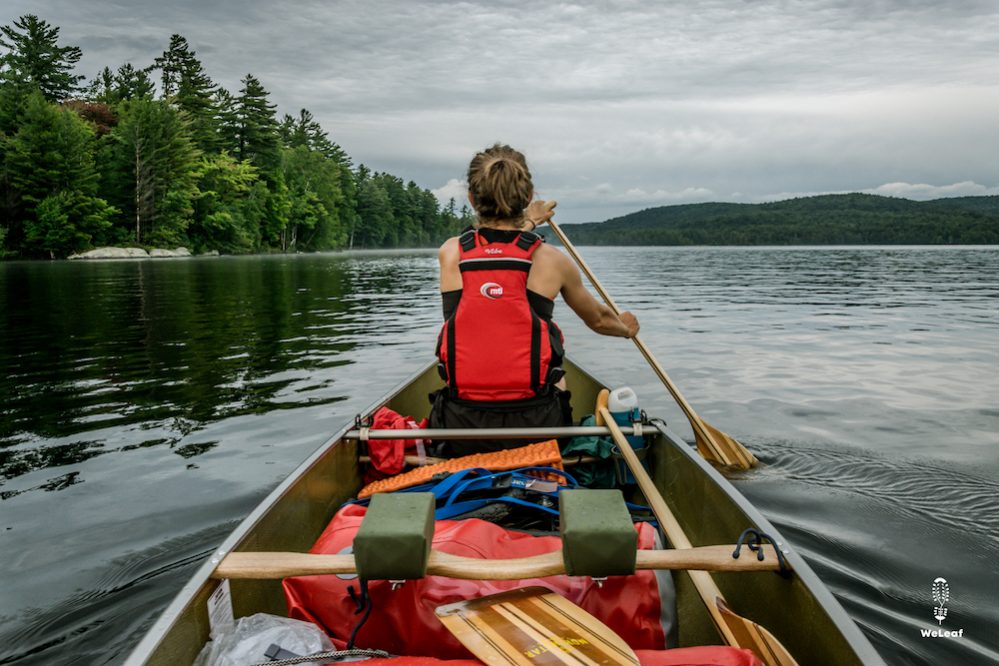
On day two we have the first portage where we cannot use the wheels. It is the first test to carry the canoe on our shoulders, including all other bags. Olivier takes the food bag and the canoe. We tie the life jackets on the seats, including the small blue bag. Zoë takes the bag with sleeping gear on her back an attaches the water bottles on the side. Then the grey bag in one hand and the wheels in the other hand. We also hang the water shoes on the side of the bags. The total weight is one hundred kilos and we each carry half. The portage is approximately one and a half kilometers, a monster distance with a hundred kilos on the back. Olivier cannot put the canoe on his head alone with the heavy food bag on the back. Zoë must help and then pack her own things. Our shoulders and arms are clearly not used to the weight. It seems that the weight increases by one kilo every meter until it is unbearable. We try to walk as fast as possible, but the steps are heavy with all the weight. Olivier is making good progress, but it is getting too heavy and he has to stop to take the weight off his shoulders for a moment. He waits for Zoë to lift the canoe off his shoulders, but Zoë is not there. He puts the back of the canoe on the ground, but that does not relieve the pain. He looks desperately for a pole or tree where he can put the front point of the canoe, but there is nothing nearby. -I can no longer sustain this, where is Zoë?-
Just in time Zoë tumbles by, with her teeth clamped on each other and her hair tangled. Her arms are sour because of the weight of the wheels and grey bag. They each weigh around 15 kilograms, which is far too heavy to hold for a long time. Zoë almost throws the bags down and runs to Olivier. She releases Olivier from the canoe and we plump down on the ground. When we catch our breath, Olivier groans "How much have we done, 200 meters?".
"I need a different technique because this is impossible," says Zoë.
She tries to put the grey bag on top of the red bag so that it piles out above her head. Now she can hold the wheels with two hands, an improvement of 150%, but we still have to stop every three hundred meters and rest for a while. Zoë's new technique works, but it hugs her neck enormously. The only option is running as fast as possible with all the weight. The sooner at the end, the better. Doubtless we are looking back at the kilometers we have just covered.
“Phoe, the portages are going to be tough, this was just the first of many portage without the wheels". The last part the rocky footpath turns into a long wooden jetty and we can use the wheels. When we put the canoe in the water, we have forgotten the pain in our shoulders already and we zigzag our way through the swampy Brown Tract to the next lake.
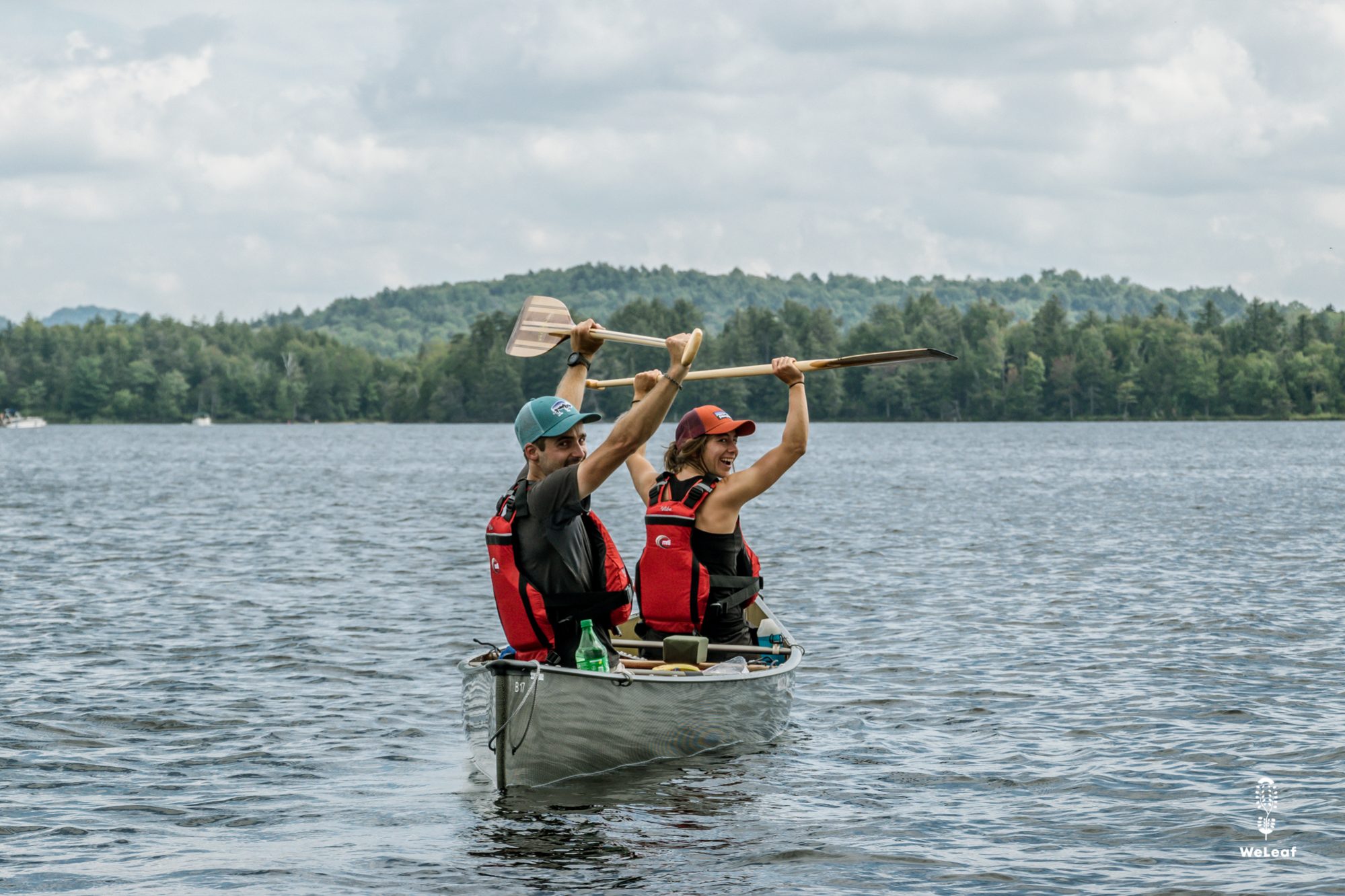




1 Comment
Very Nice! thanks for sharing. Love the NFCT!!!